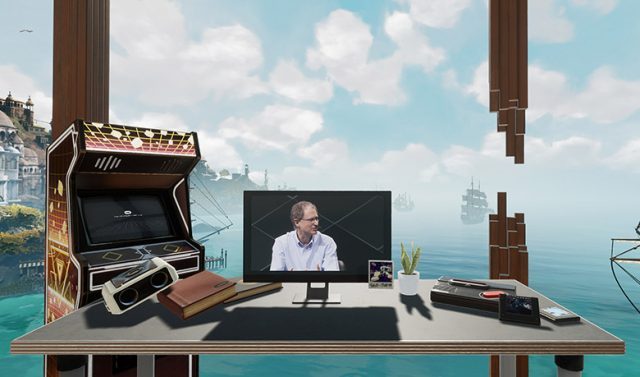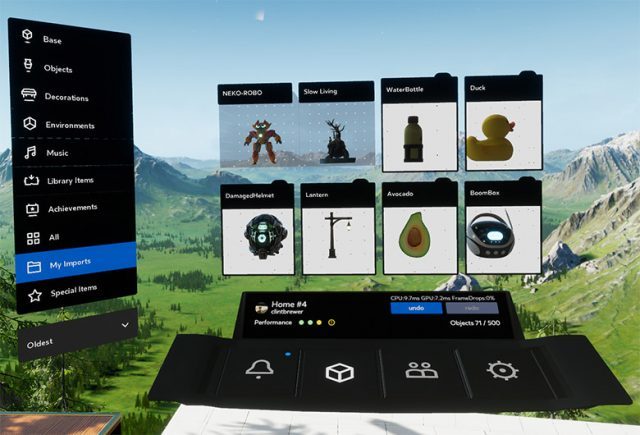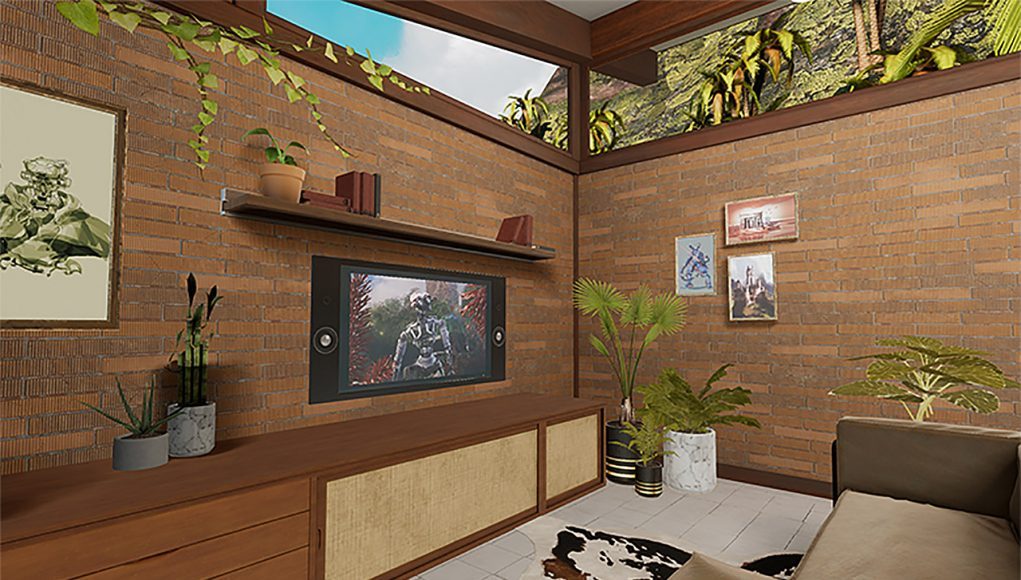Oculus Home, the hub space that users see when putting on their Oculus Rift, has been updated with virtual screens for embedded Dash content and the ability to import custom objects.
Announced in a post this week on the Oculus Blog, Oculus Home version 1.26 is rolling out to users and now offers up several screen-like items into which users can embed Dash screens. Dash, as you’ll recall, is the immersive menu which Rift users see any time they hit the Oculus button on their controller. From Dash, users can browse various menus, and even access their PC desktop to run desktop applications and flat games from within VR.

Oculus says that users can embed any Dash panel within the new Home items, including Oculus Desktop. That means that users can set up virtual monitors and TVs inside of their Home space which have the same interactive screens, except now located persistently in logical locations. There’s even some rare items that users can unlock—like a retro TV and arcade cabinet—which into which users can embed Dash panels. It’s a simple but smart change which will surely make Home feel more functional. Exactly how (or if) the functionality will carry over to Home’s eventual multi-user support is unclear.

The new Home update also takes the first step toward allowing importing of custom objects—something Oculus has had on the horizon for some time. Initially it’s a manual process (but as simple as dropping a file into the right folder) and only supports .glb (the binary version of the glTF 2.0 file format). Full instructions on importing models (and their file requirements) can be found here. Oculus also affirmed that an update to Oculus Medium later this month will allow users to import their own content directly into Home.







